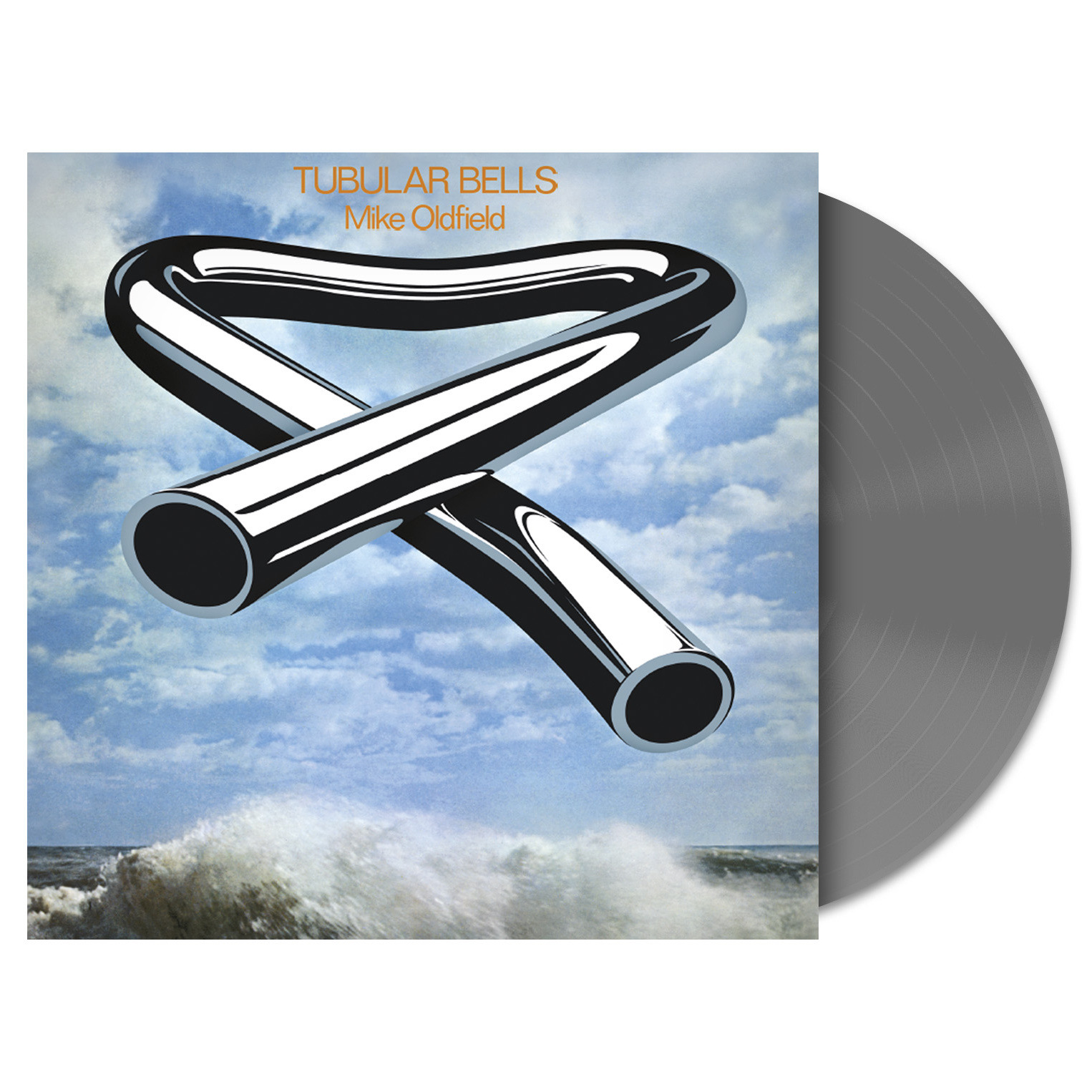Referencing Tubular Bells II, LP, Album, RE, 180, A number of recent (2018) pressings have a defect within the first minute of track one. Better off sourcing. Pagamento rimessa diretta a vista fattura elettronica. Tubular Beats is a remix album containing collaborations between Mike Oldfield and York (Torsten Stenzel), that was released on 1 February 2013.Unlike previous club mixes, the album is a true two-sided collaboration between Oldfield and Stenzel, making use of parts from the original multitrack tapes as well as new parts played by Oldfield.
by Pete Clemons
One album that music lovers never seem to forget the release of was that of Mike Oldfield’s Tubular Bells. It was just one of those seminal moments that you never forgot. Once heard, it seemed to get under your skin. I personally cannot remember any major hype to it. It just seemed to appear in the shops, however, behind it all and known only to those closest to him at the time, was a story of sadness and despair that took years for Mike Oldfield to shake off…….if he ever did.
Mike Oldfield was born in Reading during 1953. He had 2 elder siblings, Terry and Sally. A fourth child was born after Mike but sadly he passed away at a young age and this, quite naturally, had a lasting effect on Mike’s mother.
Both Terry and Sally Oldfield were involved with music. Terry became a composer while Sally played the folk scene. Seeing Mike’s interest in guitar, Sally showed him the three basic chords. From then on Mike became self-taught and very quickly became a quite gifted player. Sally and Mike formed a duo called The Sallyangie who cut an album for the Transatlantic label in 1968. Mike then formed his own, short lived, band called Barefeet.
During 1970, and still aged only 16, Mike became a member of The Whole World who were Kevin Ayres backing group. They played in Coventry a couple of times. Initially Mike played bass but then moved to lead guitar. They produced two albums with Mike playing on the classic ‘May I’ during 1971. After Kevin Ayres disbanded The Whole World instability crept into Mike’s life and he retreated deeper into music. As they shared flats, Kevin had lent Mike his tape player and Farfisa keyboard. Experimenting with this kit Mike almost immediately came up with his minimalistic opening chord sequence for what would become Tubular Bells. He also created the framework for his future epic.
With sections of the ambitious fifty minute composition mapped out, Mike hawked his tapes to record companies like EMI and CBS who both promptly rejected them. In parallel Richard Branson was looking for business opportunities. He had already set up a mail order company that involved importing LP’s and selling them on for 10%-25% less than anywhere else. And he was ready to expand.
Mike Oldfield became a session player at The Manor recording studios in Oxfordshire. The studios were being run by producer Tom Newman, who had discovered the Manor in Oxfordshire that Richard Branson had invested in it, and fellow producer Simon Heyworth. Mike Oldfield practically forced Tom and Simon to listen to his tapes. The pair was instantly captivated. And in turn, took the tapes to Richard Branson’s business partner Simon Draper, who they knew had a better ear for music than Richard.
Simon Draper and Richard Branson invited Mike Oldfield to their houseboat and offered to give Mike a week of free reign to complete part one of the album in between any sessions he had been assigned to. So November 1972 saw Mike begin the process of completing the first phase of his project. Part two being completed slightly later.
To begin the process Mike ordered in a lot of instruments. Additionally, John Cale had just finished recording at the Manor and the instruments used for his sessions were due to be collected. John had used some tubular bells and just as they were about to be picked up Mike asked for them to remain. It was an inspired decision.
The albums sleeve was created by Trevor Key and Mike loved the artwork. So as not to spoil its effect Mike deliberately asked for his name to be kept in small script. Tubular Bells release was May 1973. It was the first of three simultaneous releases on the Virgin Record label but Tubular Bells was given the distinction of being the first official release with catalogue number V2001. Almost every instrument had been overdubbed by Oldfield. And his completed work had everything. Suspense, humour, tension but above all it kept your interest throughout.
After the albums completion and release Mike was a mental wreck and didn’t want to know about it. Despite this Richard Branson insisted that the album had to go out live. And Mike Oldfield agreed to just one concert. The QEH/Royal Festival Hall was booked for June 1973. Amongst others Virgin label mates and members of Hatfield and the North and Henry Cow were drafted into the live band. As was guitarist Mick Taylor and drummer Steve Broughton. Mike did not enjoy playing live and some pre gig nerves had set in. The concert itself received a huge standing ovation that Mike felt was underserved. He himself had felt that the gig was awful.
Back in 1973 records sold mainly through word of mouth, radio shows etc. So Tubular Bells was not an instant hit. Instead it was a slow grower. John Peel gave the LP a huge boost when he devoted a whole show to it playing the whole album. Bit by bit the album crept up the charts during July August and September 1973. Another boost, particularly for the American market came in late 1973 when segments of Tubular Bells was used by a cult film called The Exorcist. That exposure certainly helped Tubular Bells hit number one in America. By the end of 1973 sales of the record had far exceeding expectations. Richard Branson, it seemed, had had major reservations that the album, one track over two sides, contained few vocals. As it turned out, he need not have worried.
Mike Oldfield was now being pressurised for a follow up record despite the fact that he himself didn’t want to capitalise on the albums success. Mike didn’t want to do a follow up so quickly. During this period Mike became very low and remembers seeing his mother, and her saying something to him to the effect of, ‘you know what it’s like now don’t you’.
Despite all the difficulties Mike did create a follow up. Hergest Ridge was released during 1974 and was soon dubbed as ‘son of Tubular Bells’. This album didn’t capture the imagination of its predecessor. However Mike’s third album ‘Ommadawn’, released during October 1975, did go a long way to dispel feelings that Mike Oldfield had peaked with his debut release.
Fast forward to July 2012 and the memorable opening ceremony for the Olympic Games and Danny Boyle had the great vision to include Mike Oldfield’s masterpiece within it. For the first time, it seemed, Mike felt comfortable about his magnificent piece of work.
Mike Oldfield Wikipedia
COVENTRY VIRGIN RECORDS ALBUM CHART August 1973
Published in Hobo (Coventry Music and Arts Magazine)
1 Mike Oldfield - Tubular Bells
3 Pink Floyd - Dark Side of the Moon
5 Santana - McLaughlin
7 David Bowie - Aladdin Sane
9 Clifford T Ward - Home Thoughts

Rapidshare Tubular Bells Mike Oldfield Album Cover
11 David Bowie - Ziggy Stardust
13 Terry Riley - Rainbow in C
15 Lindisfarne - Live
Rapidshare Tubular Bells Mike Oldfield
17 Mott the Hoople - Mott
:format(jpeg):mode_rgb():quality(90)/discogs-images/R-169100-1504909424-1908.jpeg.jpg)
19 Pink Floyd - Meddle


In October 1973, Tubular Bells was No2 to the Rolling Stones Goat's Head Soup in the Coventry Virgin Store Charts.
In February 1974, Tubular Bells was once again No1 in the Coventry Virgin store's album charts.
It fell out of the chart in March 1974 but was No2 again in June 1974, second to Gong.
Coventry Virgin Records Charts from Hobo (Coventry Music and Arts Magazine June 1974). The graphic was drawn by Wandering John guitarist - John Alderson.
Mike Oldfield Albums
Artist: Mike Oldfield
Title: Tubular Bells
Year Of Release: 1973 [2011]
Label: Mercury / Universal [UIGY-9080]
Genre: Prog Rock
Quality: DSD64 image (*.iso) / 2.0 > 1-bit/2.8224 MHz
Total Time: 00:48:53
Total Size: 1,4 GB (+3%rec.)
WebSite: Album Preview
Title: Tubular Bells
Year Of Release: 1973 [2011]
Label: Mercury / Universal [UIGY-9080]
Genre: Prog Rock
Quality: DSD64 image (*.iso) / 2.0 > 1-bit/2.8224 MHz
Total Time: 00:48:53
Total Size: 1,4 GB (+3%rec.)
WebSite: Album Preview
Rapidshare Tubular Bells Mike Oldfield Youtube
Tubular Bells is the debut record album of English musician Mike Oldfield, released in 1973.
It was the first album released by Virgin Records and one early cornerstone of their success. Vivian Stanshall provided the voice of the “Master of Ceremonies” who reads off the list of instruments at the end of the first movement. The piece was later orchestrated by David Bedford for The Orchestral Tubular Bells version and it had three sequels in the 1990s, Tubular Bells II (1992), Tubular Bells III (1998) and The Millennium Bell (1999). Finally, the album was fully re-recorded at its 30th anniversary in 2003 as Tubular Bells 2003.
Tracks:
1. Part One - 25:31
2. Part Two - 23:21
Personnel:
Mike Oldfield - Acoustic guitar, bass guitar, electric guitar, Farfisa, Hammond, and Lowrey organs; flageolet, fuzz guitars, glockenspiel, 'honky tonk' piano, mandolin, piano, percussion, 'taped motor drive amplifier organ chord', timpani, vocals and tubular bells.
Steve Broughton – percussion
Lindsay L. Cooper – string bass
Mundy Ellis – vocals
Jon Field – flutes
Sally Oldfield – vocals
It was the first album released by Virgin Records and one early cornerstone of their success. Vivian Stanshall provided the voice of the “Master of Ceremonies” who reads off the list of instruments at the end of the first movement. The piece was later orchestrated by David Bedford for The Orchestral Tubular Bells version and it had three sequels in the 1990s, Tubular Bells II (1992), Tubular Bells III (1998) and The Millennium Bell (1999). Finally, the album was fully re-recorded at its 30th anniversary in 2003 as Tubular Bells 2003.
Tracks:
1. Part One - 25:31
2. Part Two - 23:21
Personnel:
Mike Oldfield - Acoustic guitar, bass guitar, electric guitar, Farfisa, Hammond, and Lowrey organs; flageolet, fuzz guitars, glockenspiel, 'honky tonk' piano, mandolin, piano, percussion, 'taped motor drive amplifier organ chord', timpani, vocals and tubular bells.
Steve Broughton – percussion
Lindsay L. Cooper – string bass
Mundy Ellis – vocals
Jon Field – flutes
Sally Oldfield – vocals
